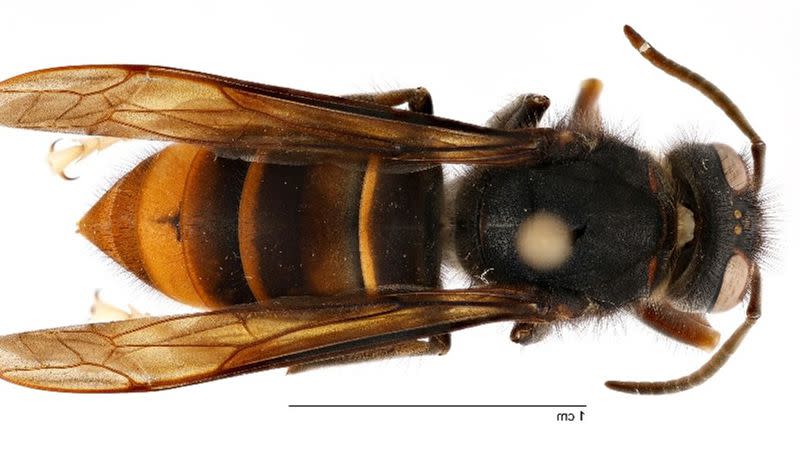Killin’ cousins: ‘Murder hornet’ kin found in U.S. for first time

Georgia agricultural officials report a close cousin of the notorious Asian “murder hornet” has been found in the U.S. for the first time and the newly discovered yellow-leg hornet, while much smaller than its well-known relative, poses an equally serious threat to honey bee populations and the crops that rely on bees for pollination.
The Georgia Department of Agriculture said it worked with the U.S. Department of Agriculture Plant & Animal Health Inspection Service and scientists from the University of Georgia to confirm the presence of a yellow-legged hornet, Vespa velutina, near Savannah earlier this month. The agency says this is the first time a live specimen of this species has been detected in the open United States.
Georgia state agriculture experts are asking for help from Peach State residents and have provided an online document to report sightings. The yellow-legged hornet’s appetite for honey bees and other pollinators represents a threat to Georgia agribusiness, one of the state’s most significant economic sectors, according to officials.
A yellow-legged hornet was recently discovered near Savannah. This invasive species could threaten honey production, native pollinators, & our state’s No.1 industry – agriculture.
We’re asking the public to report sightings to https://t.co/8JUswq3PT2. https://t.co/Bt1NqhgeL9 pic.twitter.com/9clf5l53ju— Georgia Department of Agriculture (@GaDeptAg) August 15, 2023
“These pollinators play a significant role in Georgia’s agriculture industry, the state’s main economic driver, and it is imperative that these invasive pests are tracked and eradicated,” the Georgia Department of Agriculture wrote in a web posting about the hornets. “We are working with (the U.S. Department of Agriculture and University of Georgia) to trap, track, and eradicate these pests and will continue to assess the situation as new information becomes available and allocate additional resources as needed.”
Related
Yellow-legged hornets are native to tropical and subtropical areas of Southeast Asia and generally smaller than the Northern Giant Hornet, another Asian native that is also known as the “murder hornet”. According to Georgia agriculture experts, yellow-legged worker hornets can be about half the size of a Northern Giant Hornet while yellow-legged queens can grow to about three-quarters the size of their larger cousins. Northern Giant Hornets are the world’s largest hornet and can grow up to two inches in length.
Honey bees produce a number of products, including honey, beeswax and royal jelly, but their most economically significant role, according to the U.S. Food and Drug Administration, is their work as crop pollinators.
“This agricultural benefit of honey bees is estimated to be between 10 and 20 times the total value of honey and beeswax,” the FDA wrote in a 2018 report. “In fact, bee pollination accounts for about $15 billion in added crop value. Honey bees are like flying dollar bills buzzing over U.S. crops.”
Asian hornets are also posing a threat in other areas of the world, including in Europe where they were first spotted in 2004. Since that time, hornets have decimated the honeybee population in France, according to a Thursday report by the Guardian. Scientists in the U.K. are also tracking a recent sharp rise in the Asian hornet population. British scientists have also developed a method for radio-tracking the hornets so nests can be located for eradication.
Online British newspaper The Independent recently posted a reader-captured video of a yellow-legged hornet preying on a wasp in the southeast England county of Kent. Watch it, below:

